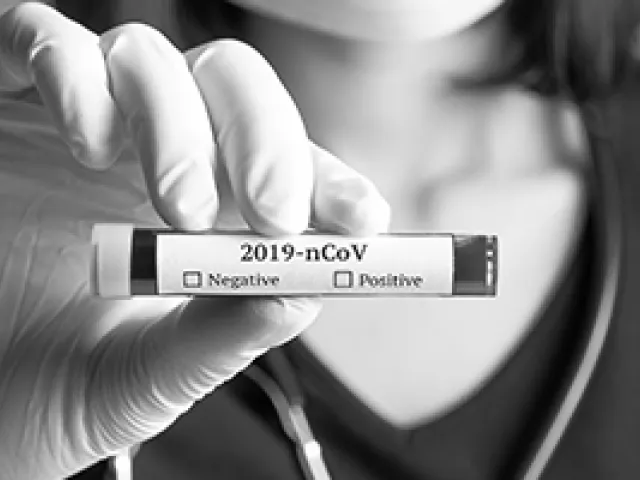Table of contents
Key Takeaways
- Many companies standardize and digitalize core business processes, but you can also benefit from codifying the business improvement journey itself.
-
One road to continuous improvement begins with a focus on the errors made in business processes.
-
You shouldn’t wait until the end of a business process to catch errors—it’s important to detect and correct errors as business processes are running.

TraceLink’s Roddy Martin talks about the science of continuous and integrative improvement with Dino Petrarolo, Senior Vice President of global consulting firm Competitive Capabilities International.
Transcript:
TraceLink’s Roddy Martin talks about the science of continuous improvement with Dino Petrarolo, Senior Vice President of Global Consulting Firm Competitive Capabilities International. That's right now on The Agile Supply Chain Podcast.
Roddy Martin: Dino, welcome to TraceLink’s thought leadership series. It's really great to interview you based on both my experience with you at SABMiller and also your work at Competitive Capabilities International.
This is a very exciting space and certainly, this whole topic of agility, resilience, and reliability is right in your bailiwick. I'd love you to talk a little bit about your experience and highlight some of the experiences. Then we'll have a discussion around this Holy Grail of agility, resilience, and reliability. Over to you.
Dino Petrarolo: Thanks very much. Maybe, by way of introduction, as an industrial engineer my heart followed the Toyota production system from its early days before it was quite vogue and hyped, and certainly have been a firm believer in an inside‑out approach.
A lot of the work that we've done over the years has been starting off in manufacturing, and then going into the supply chain, whether it's internally at the supply chain operation of the company, or into suppliers and doing supply development work, which we've done over the years as well.
More recently, the approach from a supply chain perspective has been to maybe follow more of a Procter & Gamble type of approach where it's more of an outside‑in approach. Look at the whole system and focus on the key levers of the system to improve an operation.
My personal approach has changed quite a bit over the years. Although we still do a lot of the inside‑out approach, there's much more of this end‑to‑end supply chain approach. For example, a large chemical company we're working with right now where we've gone in and started off with S&OP as a process.
Having said that, for me the one thing that CCI has done incredibly well, and we were one of the first companies when I was with SABMiller to actually use the digital platform of CCI, which basically standardized, codified the improvement process itself.
Many companies actually codify their transactional processes, their core business processes in some kind of way. They digitize it. Some companies have been digitizing for many years, but very few companies have actually had the length of time that we've had in codifying and standardizing the improvement journey itself.
That's been a very, very powerful approach for many companies.
Roddy: Dino, can I pick on that point? The key point I want to pick up is codify and use the platform for the journey. This word "platform" has got many, many different dimensions. Amazon's a platform. SAP would call themselves an ERP platform, etc.
I think there's a lot of confusion out there about what exactly is a platform. That was profound to me, and you've already said it, but I want to draw it out.
That is, by codifying the best practices in the let's say the mindsets, behaviors, the practices, the tools, the methodologies, to lead you from stage one reacting to stage five operating as a network off this fantastically codified digital platform that leads you down the journey. You'd agree with that perspective, right?
Dino: Yes, and of course there's many dimensions to the value that such a platform brings. In our case, what we've done, as you've rightfully said, it's a maturity‑based system. Although the progression is quite known, so if you take any of the practices or tools, how do you get better at it?
You could take safety as an example. What are the best companies in the world doing in terms of safety? Of course, you'll go and look at a nuclear plant because safety, it tends to be very important, in a nuclear plant. Most companies, they're somewhere in that spectrum. What we've done is we've looked at this:
What if you had a low maturity in any of those dimensions or any dimension? What are the next steps that you should be taking? That's been a real benefit for us. Another aspect of what we do is to say, if you are going to improve your approach, your practices as usage of tools, etc., what benefit do you get?
What we've done is we've also started that up that if you do take certain steps that you will get certain benefits. Of course, link to it, how long does it typically take? It's variable. It depends on the type of organization size, etc. There is a general, shall we say, a benchmark of how quickly, how rapidly you can improve.
I think that’s linked to a lot of what you're doing these days, if we just focus a little bit on the standardization of the improvement process itself, many companies are already locked into perhaps the transactional system or perhaps the protocols of the industry like in pharmaceuticals. They already have a mindset of being very rigid, very standardized.
For them to accept that you come in, and you have a soft approach to bringing people together to participate in problem‑solving and to have some form of improved teamwork, those don't necessarily go well if they're too loose and fuzzy in those organizations.
That's why I started off by saying that what we've done is we've codified and standardized the improvement journey itself. That talks quite nicely to those environments.
Roddy: It's really important. The other point I want to emphasize is when you and I were both at CCI way back, and we coined the expression, I think it was Pat, coined the expression of "integrative improvement." That’s what a lot of companies misunderstand.
Now that we're in a new wave of agile, the pandemic has said, "Oh, you're not agile enough. You're not going to be agile." You can't just go and implement a system and be agile. You need to be integrative across people, process, technologies, and leadership. That's the codified‑the‑journey‑itself perspective.
If you've got four or five different projects that are not connected, you're not necessarily going to improve the overall business process of serving patients. I just wanted to emphasize that integrative and the fact that agility, resilience, and reliability come from people, process, technology, and leadership applied on an integrative journey.
Dino: The integrated aspect is quite important. Many years ago, I worked with a guy called Kobayashi in Japan. He's unfortunately passed away now. He had a lovely analogy.
He used to love his beansprouts. He had this beansprout analogy where what he said is that, "If you focused on one single factor, and it would be bean that you put in the ground and your water, it sprouts, starts growing, you could get a lot of results from that."
For example, if you focused purely on planning or if it's a manufacturing operation, purely on maintenance, you may not get the full benefits because at the first sign of turbulence if you picture this beansprout, there's a bit of air in turbulence, it'll fall over.
What he said is that you need to grow all these little beans or plant them next to each other, and then water them, and grow them so that the bean sprouts form a tree trunk because these things are all interrelated.
You improve your IT systems, your transactional processes. You have to improve the way people work together, the teamwork, the software things, the way that you deal with issues or problems, and so on.
All of these things get interrelated. It's unlikely that you'll be good at quality manufacturing if you've got very poor maintenance systems and so on. Integration, that's why we focused very heavily on building our platform so that it integrates the practices in such a way that helps you improve as a system.
Roddy: That's really important. I think that the point is that P&G always used to amaze me because with their integrative platform, they were continually looking for the lowest common denominator, in other words across those people, process, technology, and leadership. What is holding this process back from delivering its full capabilities?
Therefore, it's not a one‑time assessment. It's a continual assessment of your maturity on that journey. It's great that you emphasize the point that it is a journey. It is a codified journey, and it needs to be led top‑down because it's an onerous investment.
One of the interesting perspectives that come out of this whole agile focus in the pandemic is you can isolate lots of disruptive events from the supply chain, react to them, and go fix them one by one.
If you just deal with an event as an isolated incident, fix the root cause of the event, and don't look systematically at the event and all the issues around it, there's a good chance it's going to come back again. That's really where this codified approach to the journey is so fundamental.
You're going to get one issue one day, and when you dig hard and you do your five whys and you look, you're going to find out, there's something else that caused this issue. I know that we can't mention the company's name, but you recently were involved in a pharmaceutical company.
Talk a little bit about your experiences that you found in a pharma environment because the big enemy in pharma is that we're validated by the FDA. Therefore, we can't change anything. That is truly an enemy of continuous improvement if you overdo it. Talk a little bit about your experiences.
Dino: The way this started is that an ex‑colleague of mine, in fact, joined this pharmaceutical company as chief operating officer. He phoned me up and said, "Come talk to us and see how you can help us." He said, "Just understand that I've been here for a month or two, and I've been told I cannot change anything because of all the protocols."
In fact, the company sells not only to the US but into Europe and Brazil and others. I think he, if I remember correctly, said that the most difficult was with Brazil in terms all the authorities there. Quite interesting, he said, "Well, I haven't looked anyway."
We started looking at some of the processes and quite quickly saw that we should start with the peripheral ones that are not under the auspices of these protocols and then started moving in closer to some processes that quickly give them leverage.
For example, in the processes, they had to send samples to the laboratory. Then laboratory was the bottleneck. What we did is ‑‑ without going into too much detail ‑‑ we used Lean principles and treated the laboratory as a factory and used some of these visual management concepts.
As I said, concepts are very well‑known concepts indeed that immediately improve this situation. They started taking notes. Of course, we've been working with them now for about three or four years and continue to do so. We challenged that things couldn't be improved that easily. That even to them was quite a revelation.
Roddy: It's a very good indicator for us because as TraceLink, we've pulled together this digital network platform, which is not unlike Amazon. It's based on an Amazon Web services platform, and we track the flow of product flowing over our platform.
The point being that at any point in time, there's issues somewhere. One of the partners, it could be a logistics issue. It could be a quality issue. The importance is having visibility of the issue and quickly being able to constitute the right team around analyzing the issue, fixing the problem, and making sure that doesn't to come back again.
To close the full loop on this discussion of ours, what I really admire in tracking in these integrative improvement systems is the fact that you've codified that journey because it's onerous to put multi‑disciplinary, multi‑level teams together to solve these problems.
Look at the implications on, say, a patient or a customer all the way downstream and realize that what you're doing today is going to impact the customer. I love the story because it's very indicative of the industry.
Dino: Roddy, if I could give one more perspective. That is also very well‑documented. If you look at quality systems, which in terms of the hierarchy and of factors in healthcare is obviously quite important.
The Lean movement and companies like Toyota emphasize the fact that their approach to improving quality is an integrated one is a participant of one and one that essentially looks at errors, errors before they become defects.
Whereas, the common traditional system would say… Let's take the example of, if your doctor sends you for blood tests, you might go to a clinic, and a nurse takes your blood, you assume that when the blood goes to the laboratory that does the testing, they've got Gage R&R, reproducibility and repeatability, of the lab technician doing the tests and that the test will be done correctly. That's not where the problems lie.
The problems don't lie in the core of the blood test. They lie on everything outside of it. The nurse that took your sample, did she or he write your name correctly on the file? The transportation of the blood from the clinic to the laboratory, did the courier service do it within the 12 or 24 hours as stipulated, or did it get lost along the way?
Now the sample's not valid anymore because it got to the lab too late. Those are examples of errors that lead to defects. When you look at what we do from an integration perspective and how we look at addressing issues in errors, it looks at those. Your base system might be very rigorous, but it's all of those things outside of it that makes a difference.
Roddy: You and I both come from a brewing background. This is so true in brewing. You can't wait till the end of an 18‑day brewing cycle to say, "Oh, my gosh, this is terrible beer. Just dump it down the drain and lose a couple of hundred thousand liters."
You’ve got to catch it while it's in process of going wrong, which is the whole principle of this idea of detecting measures and tracking measures as the process is running. Unfortunately, the pharmaceutical industry runs with this hangover of, oh, we just make 300 days' worth of inventory because we're going to spread it all over.
If we only have three quarters of a batch that passes all the tests, and we find that out, when it's ready to be shipped and say, "Oh, 25 percent of this wasn't a spec. We're still safe. Patients are still going to get their product."
Unfortunately, that's not true anymore. The pandemic has really highlighted the fact that you've got variable demand happening at all sorts of different places.
You've got constrained supply that's coming out of a supply network. You've got to match these things up. You can't be finding out that products don't meet spec just before they get to the patient. You’ve got to catch that stuff inside of the process because you have limited resources to make the product. It's a brilliant story.
It emphasizes a really important point, and that is you have to have real‑time visibility of these issues and events as they occur, be able to put together agile process teams as quickly as you can, and do the analysis to come up with the right answers and the corrections so that this goes away and doesn't just pop up elsewhere in the system.
Dino: Sorry, just to add to what you're saying, participation of everyone because everyone can contribute to the improvement process itself. That's also an important part of what we do.
Roddy: Again, to play the people, process, technology, and leadership, that's the point. You can't do this with just technology. You can't do this just by fixing a process. You've got to have the leadership and the people element.
Dino, this has been really, really great. If you had to leave a piece of advice for anybody listening to this who's first of all as context is looking at the performance of an end‑to‑end supply chain ‑‑ let's be specific, let's call it healthcare ‑‑ make one piece of recommendation around achieving levels of agility, resilience, and reliability that we're looking for going forward into the future that we haven't seen out of the pandemic.
What couple of nuggets of advice would you leave the listener with?
Dino: It's difficult to articulate that in a succinct sentence. Ultimately, any system can be improved. The world that we live in is moving an in your own area, in your own segment of industry. It is a treadmill. If you're standing still, you will be going backwards.
Every company needs to put themselves on a journey of improvement. It's like going to the gym. You have to keep fit. The improvement process itself needs to be a standard business process if I can put it that way. That could be the one thing that I would think is imperative.
Roddy: You're absolutely right. There's so many companies out there that have spent over a billion dollars on the ERP system. Let's not pick on a vendor. The CEO with the leadership team thought, we've bought everything we need to run this business.
Yes, we bought it from inside‑out point of view based on forecasts. That's fine. It could plan against the forecast but go change the demand and go make the supply variable. The traditional investments of a billion dollars in ERP system is simply not good enough.
This has been really great, Dino. I appreciate your insights. It comes in a very timely point for TraceLink obviously because we're participating with healthcare companies in solving the problems you're talking about.
When you have a manufacturer collaborating with a contract manufacturer, and you have issues and events that go wrong, you can't just fix the problem and say, "OK, that one's burned on the carpet. Gone away, let's move on to the next one."
As you are systematically embarking on a journey of continuous improvement, standardizing, and codifying the process, these things will simply come back again in different forms. Any last words of wisdom, Dino? It's been great talking to you.
Dino: I won't take credit for this, but a Japanese guru once said that in terms of your context of the supply chain is that "Your suppliers are your mirror. If they do well, you do well."
For me that always resonated because you can be extremely good, especially in some of these very sophisticated supply chains. If you're relying on suppliers that are not that sophisticated, there will be issues.
Roddy: The bottom line when you think about that as a great quote, because when you think about it, everybody in the end‑to‑end supply chain is the supply except the customer, except the patient. The patient is dependent on every supplier doing their job properly and being able to predict and see that property.
Dino, thanks very much again. I really appreciate the time you've spent. It's been lovely to talk to you again.
Dino: Thank you.
Return to: The Patient-Driven Supply Network





